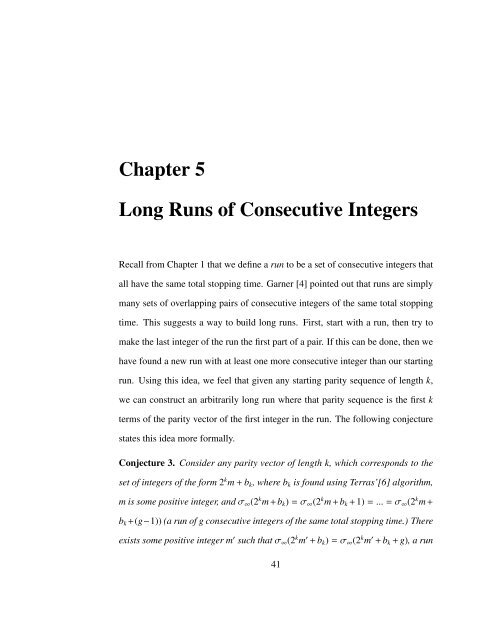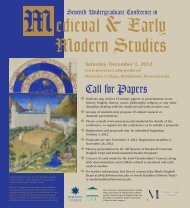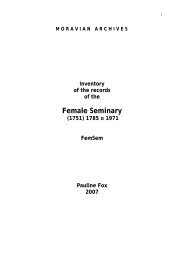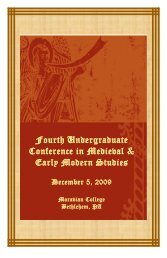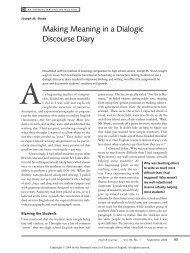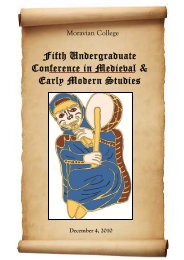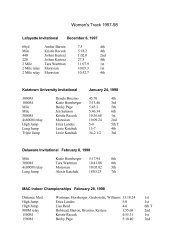Explorations of the Collatz Conjecture - Moravian College
Explorations of the Collatz Conjecture - Moravian College
Explorations of the Collatz Conjecture - Moravian College
Create successful ePaper yourself
Turn your PDF publications into a flip-book with our unique Google optimized e-Paper software.
Chapter 5<br />
Long Runs <strong>of</strong> Consecutive Integers<br />
Recall from Chapter 1 that we define a run to be a set <strong>of</strong> consecutive integers that<br />
all have <strong>the</strong> same total stopping time. Garner [4] pointed out that runs are simply<br />
many sets <strong>of</strong> overlapping pairs <strong>of</strong> consecutive integers <strong>of</strong> <strong>the</strong> same total stopping<br />
time. This suggests a way to build long runs. First, start with a run, <strong>the</strong>n try to<br />
make <strong>the</strong> last integer <strong>of</strong> <strong>the</strong> run <strong>the</strong> first part <strong>of</strong> a pair. If this can be done, <strong>the</strong>n we<br />
have found a new run with at least one more consecutive integer than our starting<br />
run. Using this idea, we feel that given any starting parity sequence <strong>of</strong> length k,<br />
we can construct an arbitrarily long run where that parity sequence is <strong>the</strong> first k<br />
terms <strong>of</strong> <strong>the</strong> parity vector <strong>of</strong> <strong>the</strong> first integer in <strong>the</strong> run. The following conjecture<br />
states this idea more formally.<br />
<strong>Conjecture</strong> 3. Consider any parity vector <strong>of</strong> length k, which corresponds to <strong>the</strong><br />
set <strong>of</strong> integers <strong>of</strong> <strong>the</strong> form 2 k m + b k , where b k is found using Terras’[6] algorithm,<br />
m is some positive integer, and σ ∞ (2 k m+b k ) = σ ∞ (2 k m+b k +1) = ... = σ ∞ (2 k m+<br />
b k +(g−1)) (a run <strong>of</strong> g consecutive integers <strong>of</strong> <strong>the</strong> same total stopping time.) There<br />
exists some positive integer m ′ such that σ ∞ (2 k m ′ + b k ) = σ ∞ (2 k m ′ + b k + g), a run<br />
41


